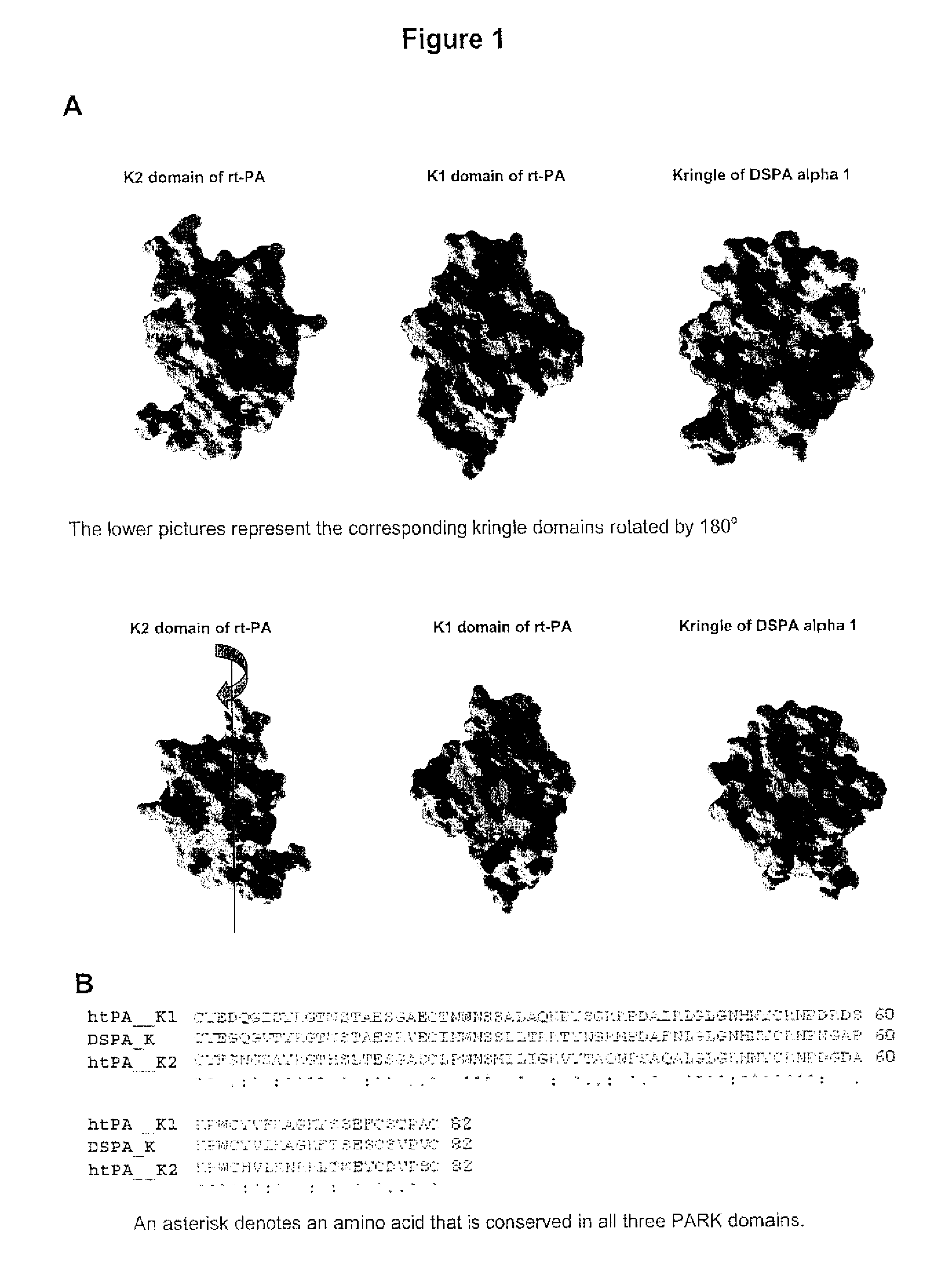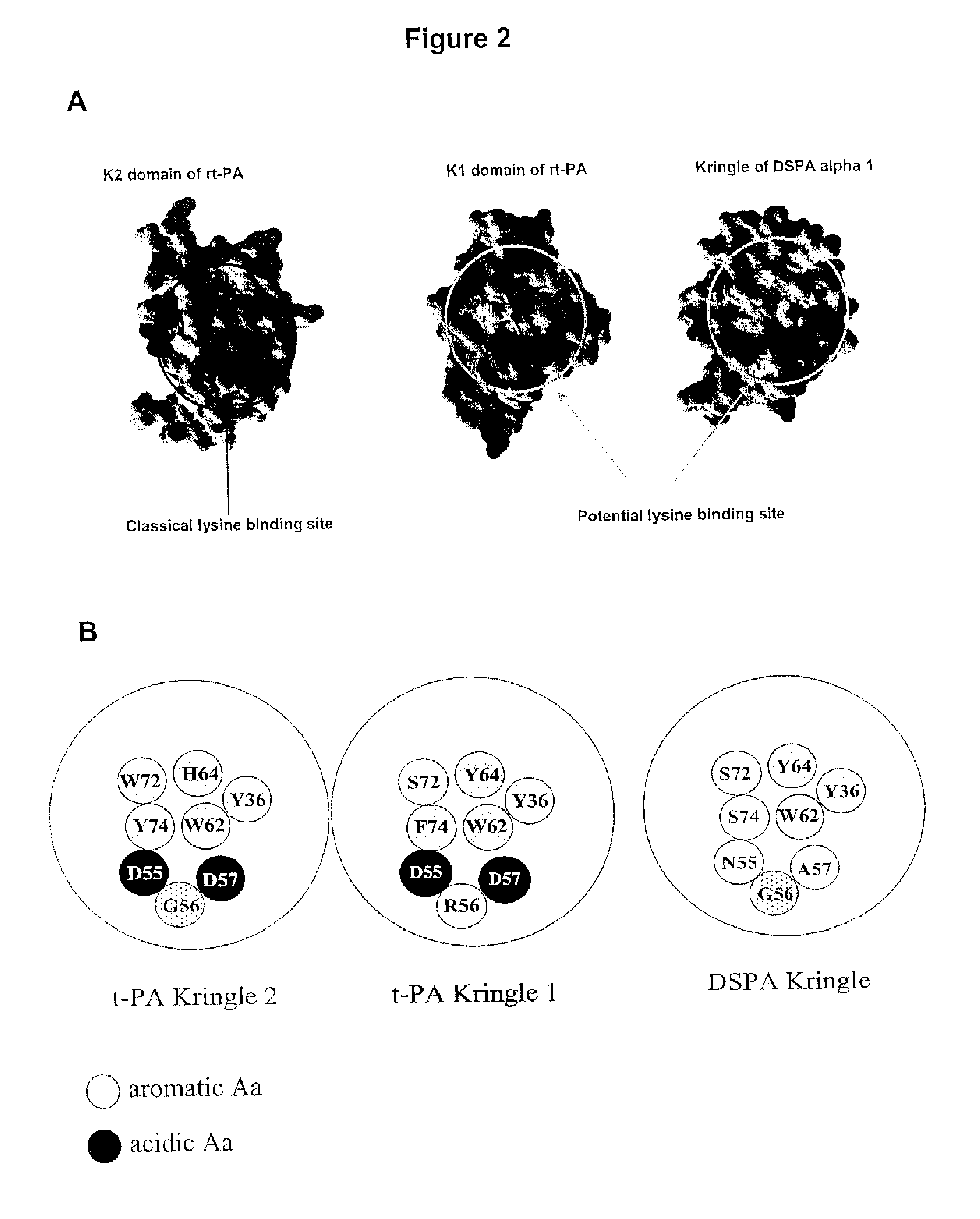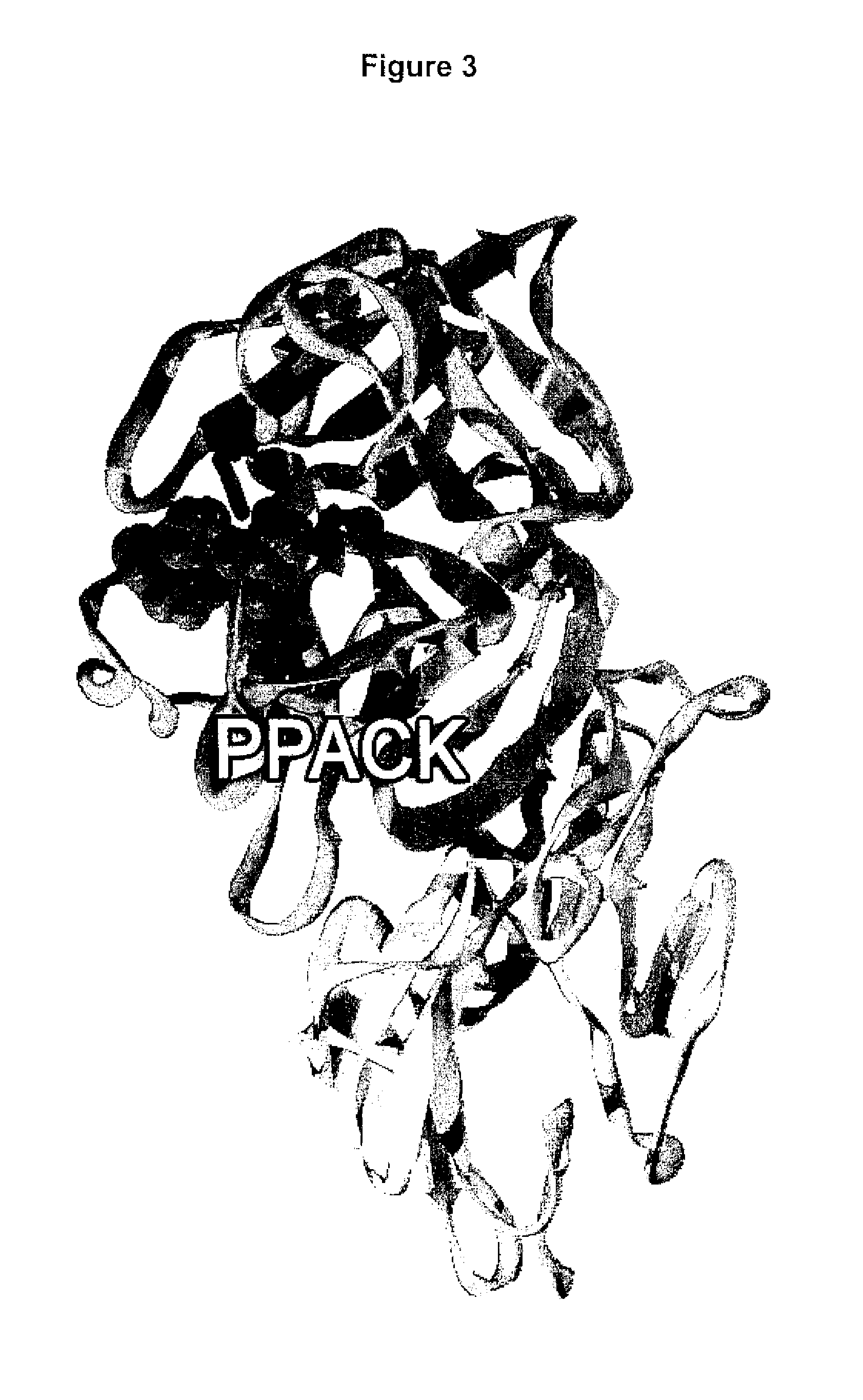Treatment of neurological or neurodegenerative disorders
a neurodegenerative disorder and treatment method technology, applied in the field of neurodegenerative disorders, can solve the problems of unproven effectiveness, deleterious effects including cerebral edema, hemorrhagic transformation and cell death, and the inability to transfer the strategy into clinical situations, so as to improve the outcome of a thrombolytic
- Summary
- Abstract
- Description
- Claims
- Application Information
AI Technical Summary
Benefits of technology
Problems solved by technology
Method used
Image
Examples
example 1
Active Immunization Against the Interaction Site of T-PA on NMDAR is Protective in a Model of In Situ Thromboembolic Stroke with Rt-PA-Induced Late Reperfusion
[0229]Focal ischaemia was induced in mice by in situ injection of plasma purified murine thrombin into the MCA (Orset et al., 2007). Immediately after thrombin injection, clot formation was evidenced by a dramatic reduction (mean reduction of 80%) of the cerebral blood velocity (CBV) as measured by laser Doppler flowmetry (FIGS. 12B and 12D). The hypo perfusion was stably established, unless rt-PA was administered iv (early or late), restoring CBV to 60-70% of baseline values within 25 minutes post rt-PA infusion (FIGS. 12B and 12D, n=10, p3±1.85 (n=10), demonstrating a 27.76% (p3±2.47; n=10; FIG. 12A).
[0230]Previous active immunization of mice with the recombinant amino-terminal domain of the NR1 subunit of the NMDAR (rATD-NR1) as an antigen altered neither clot formation nor rt-PA-induced reperfusion (FIGS. 12B and 12D). rAT...
example 2
Antibodies Raised Against the ATD-NR1 Prevent t-PA-Promoted NMDAR-Mediated Neurotoxicity
[0231]The results given in example 1 provided proof of concept for the idea that antibodies against the amino-terminal domain of the NR1 subunit of the NMDA receptor are beneficial in acute ischemic stroke. However, as active immunization is not feasible as a means to treat an acute disorder, the inventors developed a strategy of passive immunization (antibody-based immunotherapy), based on purified serum immunoglobulin from rATD-NR1-vaccinated mice. The inventors first controlled by immunoblotting that purified polyclonal anti-ATD-NR1 antibodies can recognize the immunogenic peptide. The anti-ATD-NR1 antibodies could independently recognize two forms of rATD-NR1, coupled with either a histidine-tag (FIG. 13A; 37 kDa) or a Fc-tag (data not shown). Similarly, anti-ATD-NR1 antibodies were found to interact with a protein of around 120 kDa in human brain tissue, corresponding to the expected molecul...
example 3
Antibody-Based Immunotherapy Targeting the ATD-NR1 Improves Neurological Outcome, Protects the Brain Against Stroke and Increases The Therapeutic Window of rt-PA-Induced Thrombolysis
[0233]The therapeutic value of the anti-ATD-NR1 antibodies (passive immunisation) was then investigated in vivo. First, excitotoxic lesions were induced in mice by administrating NMDA (10 nmol) into the striatum together with a single intravenous injection of control or purified antibodies. In control animals, NMDA led to an excitotoxic lesion of 17±2 mm3, while in anti-ATD-NR1 antibodies-treated mice, the lesion (9±1 mm3) was reduced in size by 47.06% (n=8 in each group, p3 for PBS-injected mice compared to 33.03 mm3 for rt-PA-injected animals 4 hours after clot formation, n=10, p<0.0025; FIG. 16C). This deleterious effect was not observed when rt-PA was co-administered with a single bolus of anti-ATD-NR1 antibodies. Rather, reductions of lesion volume by 50.52% and 62.7% were observed, compared to cont...
PUM
| Property | Measurement | Unit |
|---|---|---|
| therapeutic time window | aaaaa | aaaaa |
| therapeutic time window | aaaaa | aaaaa |
| therapeutic time window | aaaaa | aaaaa |
Abstract
Description
Claims
Application Information
 Login to View More
Login to View More - R&D
- Intellectual Property
- Life Sciences
- Materials
- Tech Scout
- Unparalleled Data Quality
- Higher Quality Content
- 60% Fewer Hallucinations
Browse by: Latest US Patents, China's latest patents, Technical Efficacy Thesaurus, Application Domain, Technology Topic, Popular Technical Reports.
© 2025 PatSnap. All rights reserved.Legal|Privacy policy|Modern Slavery Act Transparency Statement|Sitemap|About US| Contact US: help@patsnap.com



